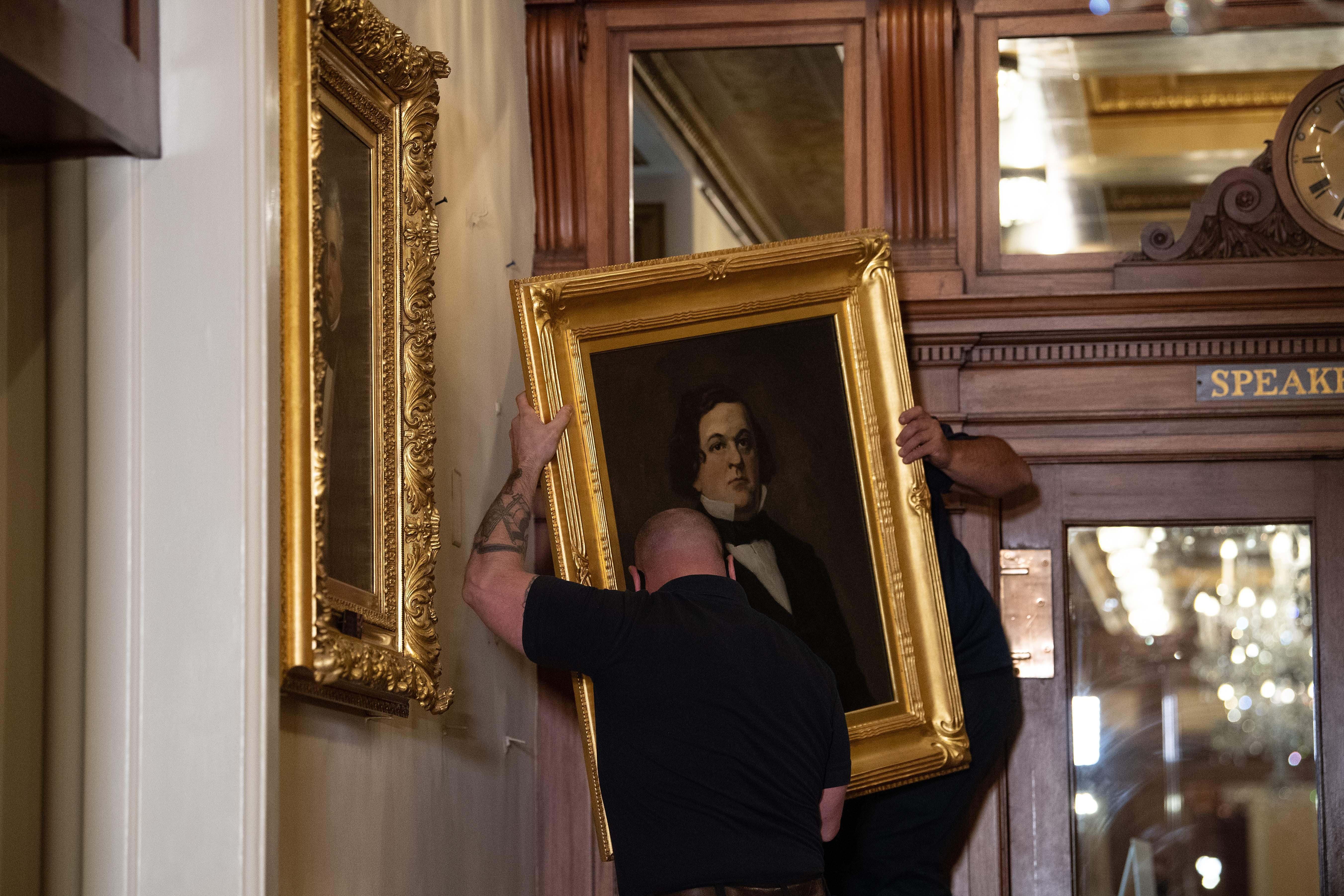House Speaker Nancy Pelosi ordered the removal of four portraits from the Capitol building each depicting a former Speaker of the House that served the Confederacy. The paintings of Robert Hunter of Virginia, James Orr of South Carolina, along with Georgia’s Howell Cobb and Charles Crisp had been hanging in the Speaker’s lobby, a long corridor outside the House Chamber, alongside portraits of previous speakers. The move came on the eve of the Juneteenth, a holiday that commemorates the end of slavery in the U.S., and is part of a larger national reckoning with public symbols and imagery that honor men and deeds that are unworthy of celebration.
“As I have said before, the halls of Congress are the very heart of our democracy,” Pelosi wrote in a letter to House clerk Cheryl Johnson requesting the paintings’ removal. “There is no room in the hallowed halls of Congress or in any place of honor for memorializing men who embody the violent bigotry and grotesque racism of the Confederacy.” Crisp fought for the Confederate Army during the Civil War, rising to speaker decades after the war’s conclusion. The others served in Congress before the war, each holding high office in the Confederacy. As speaker, Orr swore on the House floor to “preserve and perpetuate” slavery. The portraits were placed in storage.
Efforts to remove Confederate statues from the Capitol have proven more difficult. “As speaker, Ms. Pelosi has unilateral power over portraits in the House, but her efforts to remove statues of 11 Confederate officials and soldiers—including Jefferson Davis and Alexander Stephens, the president and vice president of the Confederate States of America— from the Capitol have been met with resistance,” the New York Times notes. “Current federal law gives states the power to remove a statue, as they are selected and donated by states for display in the Capitol, and top Republicans have indicated they believe states should maintain that responsibility.”

